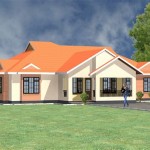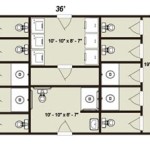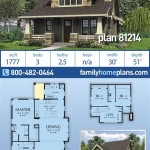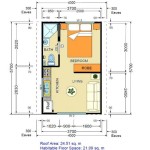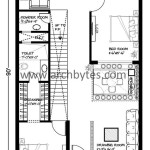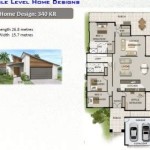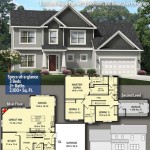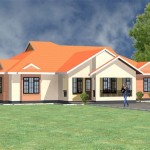Minimalist Home Plans Designs
Minimalist home plans focus on simplicity, functionality, and clean lines. These designs prioritize essential elements and eliminate unnecessary ornamentation, resulting in spaces that are both aesthetically pleasing and highly functional. The core principles of minimalism – reducing clutter, maximizing space, and embracing simplicity – translate seamlessly into architectural design.
Minimalist home plans often feature open floor plans that create a sense of spaciousness and flow. By minimizing internal walls, these designs allow natural light to penetrate deeper into the home, enhancing the feeling of openness. This layout also encourages interaction and connection between different living areas, fostering a sense of community within the home.
The use of natural materials is a hallmark of minimalist design. Materials such as wood, concrete, and stone are frequently incorporated, bringing warmth and texture to the often-stark aesthetic. These materials are chosen for their durability and inherent beauty, contributing to a sense of timelessness and quality.
Neutral color palettes are typically employed in minimalist home designs. Whites, grays, and beiges create a calming and serene atmosphere, allowing the architectural features and carefully selected furnishings to take center stage. Accents of black or other deep colors can be strategically used to create visual interest and define specific areas.
Large windows and glass doors are integral to minimalist home plans. These features not only maximize natural light but also blur the lines between indoor and outdoor spaces, creating a seamless transition between the home and its surrounding environment. This connection to nature is a key element in many minimalist designs.
Storage solutions are carefully integrated into minimalist homes to maintain a clutter-free environment. Built-in shelving, hidden storage compartments, and minimalist cabinetry provide ample space for belongings while maintaining a clean and uncluttered aesthetic. These integrated solutions contribute to the overall sense of order and simplicity.
Minimalist home plans often prioritize energy efficiency and sustainability. The use of sustainable materials, energy-efficient appliances, and passive solar design principles can reduce environmental impact and lower operating costs. This focus on sustainability aligns with the minimalist philosophy of reducing consumption and living more intentionally.
Furniture in minimalist homes is carefully selected and often multi-functional. Clean lines, simple shapes, and neutral colors are preferred, echoing the overall aesthetic of the home. Furniture is chosen for its practicality and durability, avoiding excessive ornamentation and unnecessary pieces.
Landscaping in minimalist homes often mirrors the simplicity of the architecture. Native plants, drought-tolerant landscaping, and minimalist hardscaping create a low-maintenance and visually appealing outdoor space. The focus is on creating a harmonious connection between the home and its natural surroundings.
Different types of minimalist home plans cater to various needs and lifestyles. Small minimalist house plans are ideal for individuals or couples seeking a compact and efficient living space. Modern minimalist house plans often incorporate innovative design features and technology. One-story minimalist house plans offer convenient and accessible living, while two-story minimalist house plans provide additional space and privacy.
Choosing a minimalist home plan requires careful consideration of individual needs and preferences. Factors such as budget, lifestyle, and desired level of functionality should be taken into account. Working with an architect or designer can help tailor a minimalist home plan to specific requirements and ensure that the final design meets the homeowner's vision.
The benefits of minimalist home plans extend beyond aesthetics. The simplified living environment can promote a sense of calm and well-being, reducing stress and promoting mindfulness. The focus on functionality and efficiency can also simplify daily routines and free up time for other pursuits.
Minimalist home plans represent a growing trend in residential architecture. The emphasis on simplicity, functionality, and sustainability resonates with many homeowners seeking a more intentional and fulfilling way of life. These designs offer a compelling alternative to traditional home styles, providing a framework for a clutter-free and aesthetically pleasing living environment.
The adaptability of minimalist design allows for personalization and individual expression. While adhering to the core principles of minimalism, homeowners can incorporate their own unique style and preferences through carefully selected furnishings, artwork, and personal touches. This allows for the creation of a minimalist home that is both aesthetically pleasing and reflective of individual personality.
Construction of minimalist homes often prioritizes quality over quantity. The focus on fewer, high-quality materials and meticulous craftsmanship results in durable and long-lasting structures. This approach not only enhances the overall aesthetic of the home but also contributes to its long-term value and sustainability.
Modern Minimalist House Free Design 3d Floor Plans By Planner 5d
Casa Moderna Planos De Plantadecasa Casamoderna Arquitetura Minimalist House Design Container Plans Small Contemporary
Minimalist House Design Floor Plan From Concepthome Com Plans Small
Minimalist House 85 Design Archdaily
Pin By Arcupp10 On Dwelling Modern House Design Minimalist Designs Exterior
470 Best Minimalist House Design Ideas Plans
Modern Home Design With Clean Lines
Characteristics Of Simple Minimalist House Plans Narrow Design Open Concept
5 Characteristics Of Modern Minimalist House Designs
The Modern Minimalist Home House Plans By Mark Stewart

